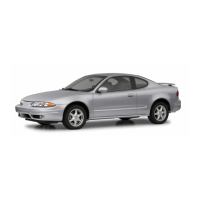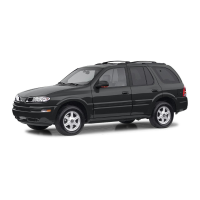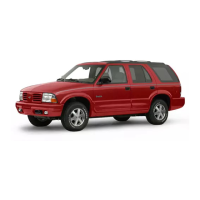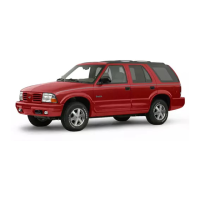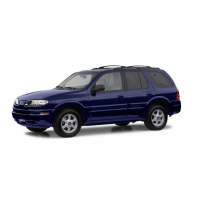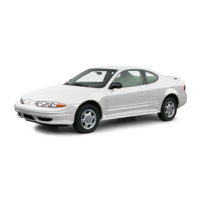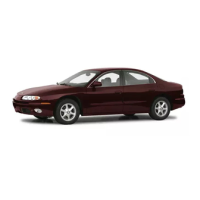When you drive over obstacles or rough terrain, keep a
firm grip on the steering wheel. Ruts, troughs or
other surface features can jerk the wheel out of your
hands
if
you’re not prepared.
When you drive over bumps, rocks, or other obstacles,
your wheels can leave the ground.
If
this happens,
even with one or two wheels, you can’t control
the vehicle as well or at all.
Because you will be on an unpaved surface, it’s
especially important
to
avoid sudden acceleration,
sudden turns or sudden braking.
In a way, off-road driving requires a different kind of
alertness from driving on paved roads and highways.
There are no road signs, posted speed limits or
signal lights.
You have
to
use your own good judgment
about what is safe and what isn’t.
Drinking and driving can be very dangerous on any
road. And this is certainly true for off-road driving. At the
very time you need special alertness and driving
skills, your reflexes, perceptions and judgment can be
affected by even a small amount of alcohol.
You
could have a serious
-
or even fatal
-
accident
if
you
drink and drive or ride with a driver who has been
drinking. See
Drunken Driving
on
page
4-2.
Driving on Off-Road Hills
Off-road driving often takes you up, down or across a
hill. Driving safely on hills requires good judgment
and understanding of what your vehicle can and can’t
do. There are some hills that simply can’t be driven, no
matter how well bui he vehicle.
Man)
ills
are
~..-.ply
.,o
steep for any vehicle.
If
you drive up them, you will stall.
If
you drive
down them, you can’t control your speed.
If
you
drive across them, you
will
roll over. You could
be
seriously injured or killed.
If
you have any
doubt about the steepness, don’t drive the hill.
Approaching
a
Hill
When you approach a hill, you need
to
decide
if
it’s one
of those hills that’s just
too
steep
to
climb, descend
or cross. Steepness can be hard to judge. On a very
small hill, for example, there may be a smooth, constant
incline with only a small change in elevation where
you can easily see all the way to the top. On a large hill,
the incline may get steeper as you near the top, but
you may not see this because the crest
of
the hill
is hidden by bushes, grass or shrubs.
4-1
9
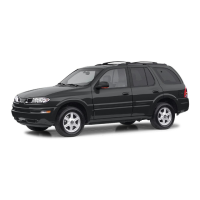
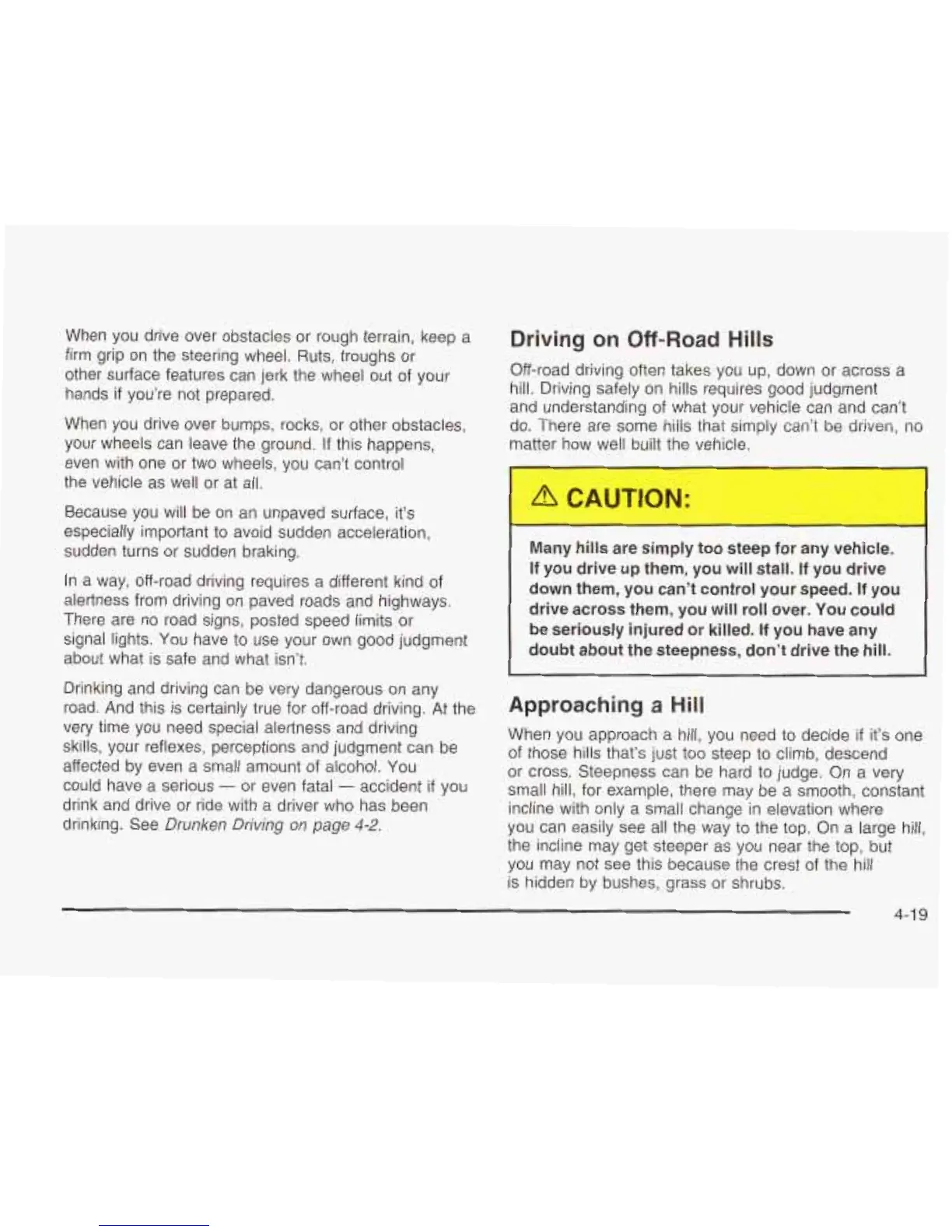